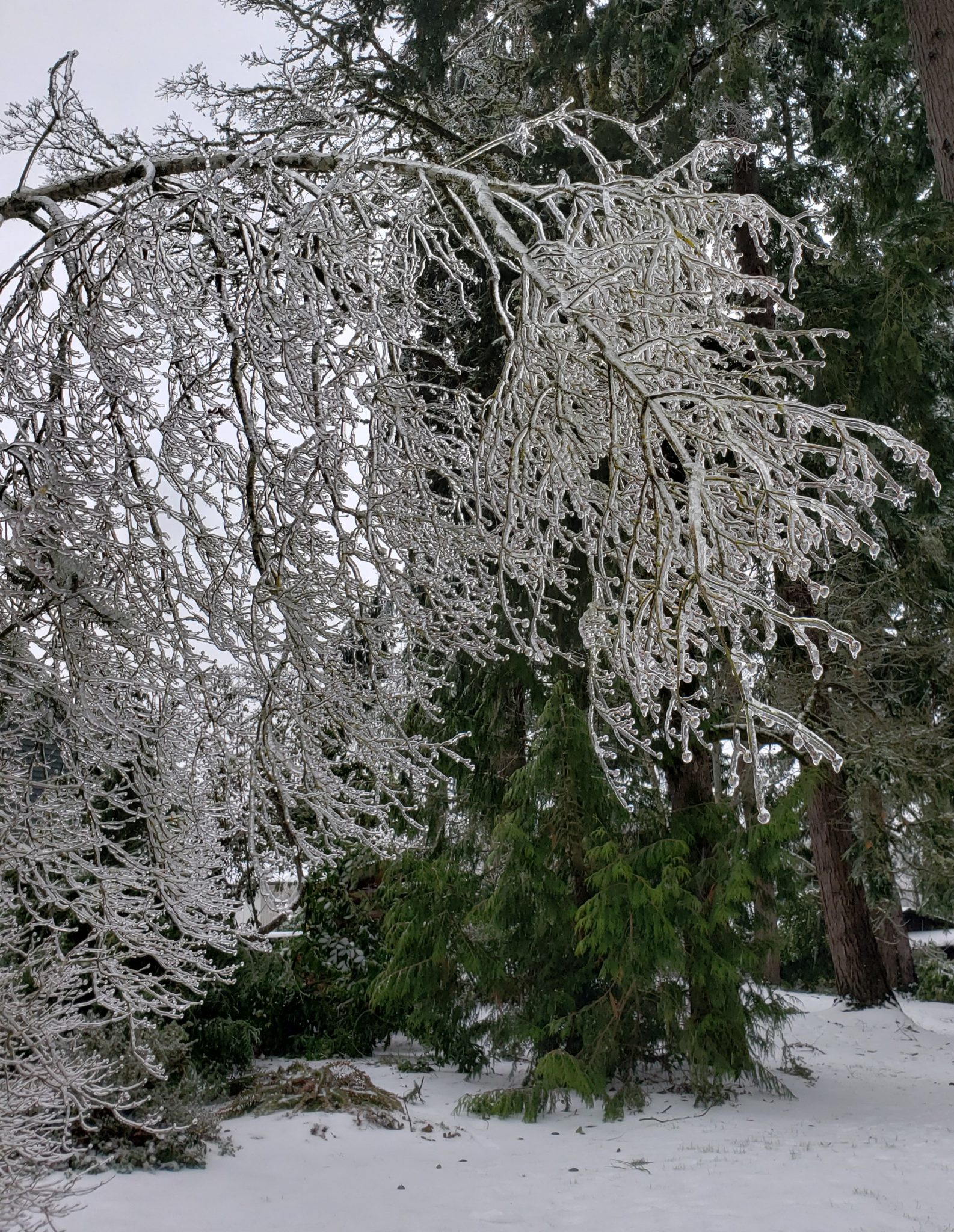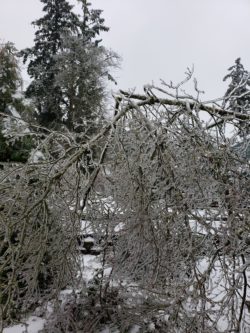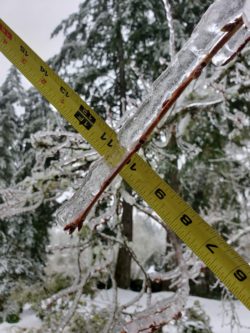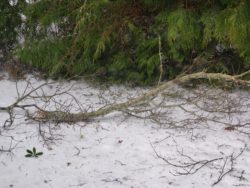
Storm Damaged Tree Recovery
The recent winter storm brought thick ice and snow to the Portland area, taking a heavy toll on our urban forest. We have seen widespread tree damage across the Portland area ranging in severity from catastrophic failures requiring removal to minor branch breakages resolved with pruning. Our arborists are working hard to help with your tree emergencies and will continue to aid in storm damaged tree recovery for weeks and months to come.

Prioritizing Hazards During Storm Response
Our ISA-certified arborists are also ISA Tree Risk Assessment Qualified. This additional education trains arborists in the systematic process for identifying tree risk. The severity of a hazard posed by a tree depends both on the likelihood of failure and the potential harm caused by a failure. Broken trees that pose a severe hazard are prioritized first. Severe hazards involve trees that have such significant breaks that the likelihood of further damage to people or property is high. This ice storm brought down many whole trees onto houses, split large trunks, and sheared off significant portions of canopy.

Storm Damaged Tree Recovery
The ice measured ¾” thick on a maple twig in Lake Oswego. This heavy ice broke many large tree branches. Broken branches still attached to the tree should be removed to mitigate the hazard of falling branches. Broken branch stubs from branches that have already fallen from the tree will need to be pruned clean to promote proper healing.

If you have a storm-damaged tree, our ISA-certified arborists can consult with you on the best course of action to mitigate hazards and help your trees recover.
Tree Maintenance for Hazard Reduction
With the severity of this ice storm, even well-maintained trees were damaged. Arborists at For The Love Of Trees recommend regular tree care throughout the life of the tree to promote healthy structure. Maintaining your trees reduces the likelihood of severe failure due to weather events. Some common hazard reduction strategies include dead wood removal, removal of broken branches, removal of flawed or compromised growth, branch end-weight reduction, and compromised whole tree removal. See our article “Hazard Reduction Pruning” for a more detailed description of our approach.


